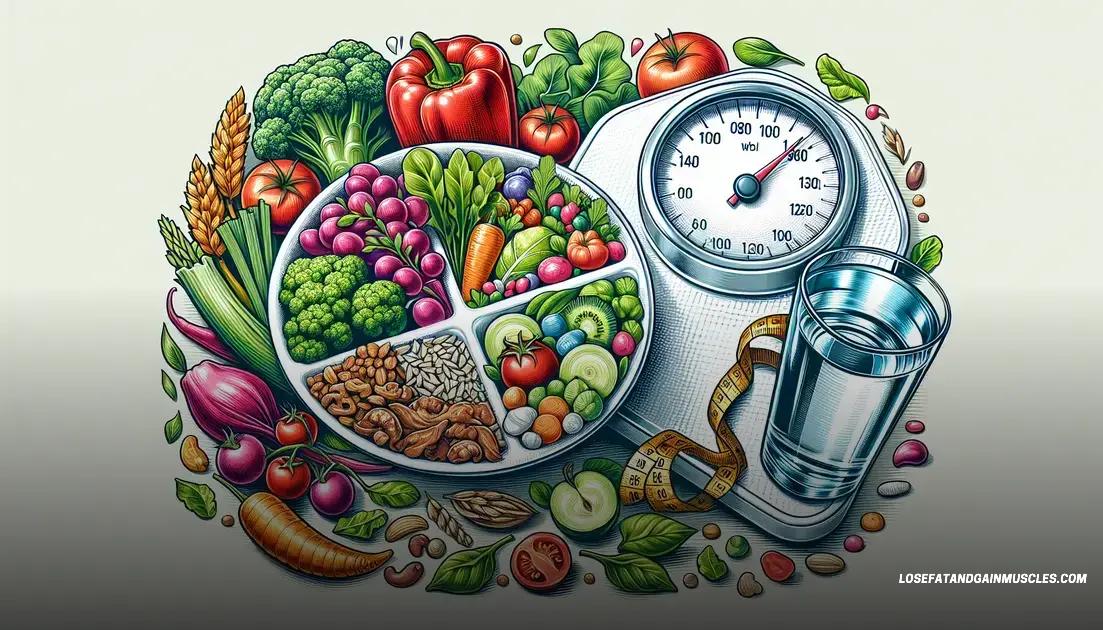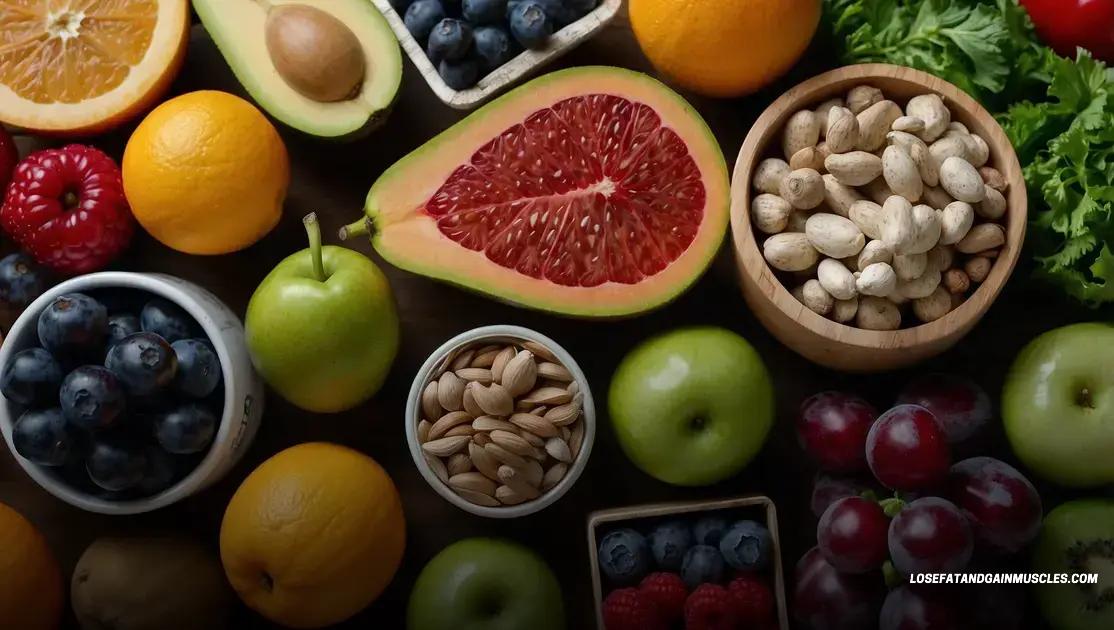What Are the Signs of Losing Body Fat? Discover the Key Indicators
The signs of losing body fat include physical changes like measuring reductions, behavioral shifts towards healthier eating, effective exercise routines, and psychological benefits such as increased confidence and improved mood. Monitoring these indicators can help you stay motivated and track your fat loss journey effectively.
Understanding the signs of losing body fat is crucial for anyone on a fitness journey. By recognizing these indicators, you can stay motivated and adjust your approach as needed. Whether you’re noticing changes in your body measurements or your energy levels, these signs can help you gauge your progress. In this article, we’ll explore key signs you should watch for, including physical indicators, behavioral changes, and how nutrition plays a role in your journey.
Physical Indicators of Fat Loss
When trying to lose fat, physical indicators play a vital role in tracking progress. Here are some key signs you might notice:
1. Changes in Body Measurements
As you lose body fat, you will likely observe changes in your body measurements. For example, your waist, hips, and thighs may become smaller. Using a measuring tape can help you keep track of these changes over time.
2. Fitting into Clothes Differently
Another sign of losing fat is that your clothes fit differently. You may notice that your clothes are looser in certain areas, particularly around your waist and arms. It’s a great way to gauge your progress without the scale.
3. Visible Muscle Definition
As you lose fat, you may start to see more muscle definition. Areas such as your arms, abs, and legs may become more toned. This change occurs because the layer of fat over your muscles is decreasing, allowing them to show through.
4. Decreased Body Fat Percentage
Regularly assessing your body fat percentage can offer a clear indication of fat loss. Tools like calipers or body fat scales can give you a good idea of how much fat you’re losing while preserving muscle mass.
5. Increased Energy Levels
Feeling more energetic is often a sign that you are losing fat, especially if you are also improving your overall health with diet and exercise. As your body becomes more efficient, you might feel less fatigued during daily activities.
6. Improved Physical Performance
Lastly, enhanced physical performance is a strong indicator of fat loss. If you find that you can exercise longer or lift heavier weights, it may suggest a decrease in body fat and more muscle strength.
Behavioral Changes to Look For

When you’re on a journey to lose fat, you’ll probably notice some behavioral changes in yourself. These changes can help you identify your progress and stay motivated. Here are some common behavioral changes to look for:
1. Increased Motivation to Exercise
As you begin to see results, your motivation to exercise may increase. You might find yourself looking forward to workouts and enjoying your time at the gym or during outdoor activities.
2. Healthier Food Choices
Another significant change might be in your food choices. You may start to crave healthier options like fruits, vegetables, and lean proteins. This reflects an improved relationship with food as you focus on nourishing your body.
3. Improved Sleep Patterns
Losing fat can lead to better sleep quality. As your body becomes healthier, you may find it easier to fall asleep and stay asleep, which is crucial for overall well-being.
4. Developing Meal Prep Habits
As you become more committed to your fat loss goals, you might start planning and preparing your meals in advance. This habit can help you make better food choices and resist unhealthy temptations.
5. More Social Activities
You may notice that you become more social, seeking out activities that are active and involve friends or family. This could be going for a hike or attending fitness classes, both of which are great for support and motivation.
6. Tracking Progress Regularly
Lastly, keeping track of your progress might become a routine. This could include logging workouts, taking photos, or noting your food intake. Regular self-assessment helps you stay accountable and encourages continued efforts.
Measuring Body Fat Percentage
Understanding how to measure body fat percentage is crucial for anyone looking to accurately track their fat loss journey. Here are some common methods you can use:
1. Skinfold Calipers
Using skinfold calipers involves pinching the skin and underlying fat at specific sites on the body. This method helps estimate overall body fat percentage when measurements are taken at multiple sites, like the abdomen and triceps.
2. Body Fat Scales
Body fat scales use bioelectrical impedance analysis (BIA) to estimate fat percentage. You simply stand on the scale, which sends a small electrical current through your body. The resistance encountered is used to calculate body fat.
3. DEXA Scan
A DEXA scan is one of the most accurate ways to measure body fat and bone density. This method uses low-level X-rays to determine fat distribution throughout the body.
4. Hydrostatic Weighing
This method involves submerging yourself in water to determine body density. By comparing your weight in water and on land, you can accurately assess body fat percentage.
5. Circumference Measurements
Taking circumference measurements, like waist or hip size, can also provide insight into body fat loss. Tracking these measurements over time can show changes in fat distribution and overall fat loss.
6. Online Calculators
Many online calculators can estimate body fat percentage based on personal information like age, weight, height, and gender. These calculators provide a quick and easy way to get a rough estimate.
The Role of Nutrition in Fat Loss

Nutrition plays a crucial role in fat loss. It’s not just about cutting calories; it’s about fueling your body with the right foods. Here’s how nutrition affects fat loss:
1. Caloric Deficit
To lose fat, you need to consume fewer calories than you burn. This caloric deficit encourages your body to use stored fat for energy. However, it’s essential to achieve this deficit without compromising your health.
2. Macronutrients Balance
Understanding macronutrients—proteins, fats, and carbohydrates—is vital. Each plays a unique role in your diet. Increasing protein intake can help maintain muscle mass while losing fat. Healthy fats are also essential for hormone balance.
3. Whole Foods vs. Processed Foods
Focusing on whole foods—like fruits, vegetables, lean proteins, and whole grains—provides essential nutrients and supports fat loss. In contrast, processed foods often contain unhealthy fats, sugars, and preservatives that can hinder progress.
4. Hydration
Drinking enough water is essential during fat loss. Staying hydrated helps your body function properly and can reduce hunger. It also aids in digestion and nutrient absorption.
5. Meal Timing
While there is no one-size-fits-all approach, paying attention to when you eat can be beneficial. Some people find that eating smaller, frequent meals helps control hunger and boosts metabolism.
6. Listening to Your Body
Learning to listen to your body cues is another important aspect of nutrition. Eating when you are truly hungry and stopping when you feel satisfied can help prevent overeating, supporting your fat loss goals.
Exercise Changes and Fat Loss
Making changes to your exercise routine is a key element for effective fat loss. Here are some significant exercise changes that can enhance your journey:
1. Increasing Intensity
To promote fat loss, you may need to increase the intensity of your workouts. Incorporating high-intensity interval training (HIIT) can help burn more calories in less time, making your workouts more efficient.
2. Adding Strength Training
Strength training is essential for preserving muscle mass while losing fat. Engaging in weight lifting or bodyweight exercises at least two to three times a week can boost your metabolism and enhance fat loss.
3. Varying Your Routine
Changing your exercise routine regularly can prevent boredom and plateaus. Try new activities such as cycling, swimming, or group classes to keep your workouts engaging and effective.
4. Incorporating Cardio
Cardiovascular exercises like running, walking, or aerobic classes are excellent for burning calories. Aim for at least 150 minutes of moderate cardio each week to support your fat loss efforts.
5. Combining Different Types of Workouts
Combining different types of workouts, such as strength, cardio, and flexibility exercises, can provide well-rounded fitness. This approach can keep your body challenged and promote continual fat loss.
6. Tracking Your Progress
Keeping track of your workouts and progress can motivate you to stick with your routine. Use a journal or fitness app to log your workouts, calories burned, and changes in strength or endurance over time.
Psychological Signs of Fat Loss

Identifying psychological signs of fat loss can provide valuable insight into your progress. Here are some key psychological indicators to look for:
1. Enhanced Confidence
As you lose fat, you may notice a boost in your confidence. Feeling better about your body can lead to improved self-esteem and a more positive outlook on life.
2. Improved Mood
Losing fat can lead to better moods, as regular exercise and healthy eating trigger the release of endorphins. You might find yourself feeling happier and more energetic throughout the day.
3. Goal-Oriented Mindset
Another sign is an increased focus on your goals. Staying dedicated to your fat loss journey may strengthen your ability to set and achieve personal goals in other areas of your life.
4. Reduced Food Cravings
You might experience fewer cravings for unhealthy foods over time. As your relationship with food improves, you may start to enjoy healthier options instead.
5. Stress Reduction
Engaging in physical activity can often help reduce stress. As you lose fat, the psychological relief from exercising and achieving results can make you feel less stressed overall.
6. Greater Mindfulness
Finally, you may become more mindful about your food choices and exercise habits. This awareness can help you make healthier decisions, further supporting your fat loss journey.
Understanding the Signs of Losing Body Fat
Recognizing the signs of losing body fat is essential for anyone seeking to improve their health and achieve fitness goals. From physical indicators like measurement changes to psychological signs such as increased confidence and better mood, each aspect plays a crucial role in your journey.
Your effort to combine proper nutrition, effective exercise routines, and mindful behavioral changes can lead to significant fat loss. Staying informed about your progress and adjusting your strategies as needed will enhance your success.
Don’t overlook the importance of tracking your body fat percentage or noting the changes in your mental state, as these can be powerful motivators. By being aware of these signs, you can stay focused and committed to achieving your health goals.
FAQ – Frequently Asked Questions about Losing Body Fat
What are the physical signs that I am losing body fat?
Physical signs include changes in body measurements, fitting clothes differently, and visible muscle definition.
How can I track my body fat percentage?
You can track body fat percentage using methods like skinfold calipers, body fat scales, DEXA scans, and online calculators.
What role does nutrition play in fat loss?
Nutrition is critical for fat loss, focusing on a caloric deficit, balanced macronutrients, and choosing whole foods over processed ones.
What types of exercises are best for fat loss?
A mix of strength training, high-intensity interval training (HIIT), and cardio exercises are effective for fat loss.
How do psychological signs indicate fat loss?
Psychological signs include increased confidence, improved mood, reduced food cravings, and a greater focus on health goals.
How long does it take to see signs of fat loss?
The time varies for each individual, but noticeable changes can typically be seen within a few weeks of consistent effort.













